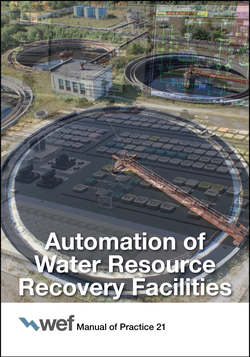Читать книгу Automation of Water Resource Recovery Facilities - Water Environment Federation - Страница 229
5.4.2 Well Pumping—Variable-Speed Pumps
ОглавлениеWith variable-speed pumps, the well level can be controlled to a narrow level setpoint of the well because its speeds can vary to better control the level. Even with variable-speed pumps, it may be desirable to allow the well level to vary over a range to dampen the incoming flow. This can be accomplished by adjusting the tuning parameters of the control loop. When setting the level setpoint, energy use of the pumps should also be considered. Maintaining the well level as high as possible reduces the head of the pumping system, which results in lower energy use. A high wet well level also avoids suction head issues that could lead to pump cavitation in some instances. Alternatively, a high well level may increase the risk of well flooding. In addition, a constantly high well may allow for materials to settle within the well. The well level setpoint must be a trade-off for these considerations.
With variable-speed pumps, the pump speed is altered to maintain the level setpoint. The pump speed is increased as the well level increases above the setpoint and decreases as the well level decreases below the setpoint. If more than one variable-speed pump is available, all operating pumps are typically controlled to the same speed setpoint. This provides greater efficiency and better control. Each stage of pump (e.g., lead, Lag1, Lag2…Lagx) is started and stopped based on pump speed. If the pump speed setpoint is at its maximum and the well level is rising, the next highest stage pump is started (e.g., if only the lead pump is operating, then the Lag1 pump will start). If the pump speed setpoint is at its minimum and the well level is decreasing, then the running pump with the highest stage is stopped.
If a combination of constant speed and variable-speed pumps exist, it is often beneficial to control the system similar to that with multiple variable-speed pumps. However, only the variable-speed pump will be able to modulate its speed. In this instance, the variable-speed pump remains as the lead pump whenever possible so that it is running to modulate the output and control the level to a setpoint. If a variable-speed pump is unavailable, the constant speed pump will become lead and the control will need to revert to the constant-speed strategy with the well controlled over a wider range.
